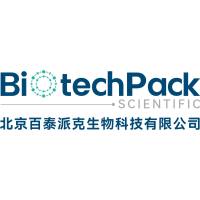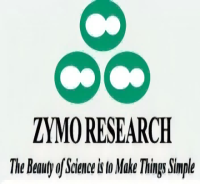DNA Plasmid Maxiprep Protocol
互联网
1. Pick single colony and inoculate 250 ml of LB broth containing 100 m g/l ampicillin or appropriate antibiotic. Shake at 250 RPM overnight.
2. Centrifuge cells in a Sovall GSA (250 ml)or SLA-3000 (500 ml) rotor at 5 k × g for 10 minutes.
3. Resuspend cell pellet in 5 ml of GTE buffer (50 mM Glucose, 25 mM Tris-Cl, 10 mM EDTA, pH 8) by pipetting up and down with a 10ml pipette. Optional: add a spatula tip of lysozyme powder. A good suspension is consistent without clumps of cell pellet.
4. Add 10 ml of NaOH/SDS lysis solution (0.2 M NaOH, 1% SDS). Use a spatula to stir and dissolve the cells until the solution becomes clear, yellow. Alternatively, you can shake the bottle for 5 seconds.
5. Quickly add 7.5 ml of 5 M potassium acetate solution (pH 4.8) . This solution neutralizes NaOH in the previous lysis step while precipitating the genomic DNA and SDS in an insoluble white, rubbery precipitate. Shake bottle thoroughly. Centrifuge at 10 k × g for 10 minutes.
6. Pour the supernatant into a clean SS-34 tube through a small two-ply square of cheesecloth placed in the center of a funnel. The cheese cloth catches any fragments of SDS/genomic DNA pellet floating on the surface.
7. Precipitate the nucleic acids by adding 20 ml of isopropanol to the SS-34 tube and ice for 10 minutes. Centrifuge at 10 k × g for 10 minutes.
8. Aspirate off all the isopropanol supernatant. Dissolve the pellet in 5 ml of TE buffer (10 mM Tris-Cl, 1 mM EDTA, pH 7.5). Add 5 ml of 5 M LiCl solution to precipitate RNA. Leave on ice for 10 minutes and centrifuge at 10 k × g for 10 minutes.
9. Pour off the supernatant containing plasmid DNA into a clean SS-34 tube. Add an equal volume of isopropanol (10 ml) and precipitate the nucleic acids on ice for 10 minutes. Centrifuge at 10 k × g for 10 minutes.
10. Aspirate off all the isopropanol supernatant. Dissolve the pellet in 1 ml of TE buffer . Transfer TE solution into a 1.5 ml epindorf tube. Add 15 μl of RNAse A solution (20 mg/ml stock stored at -20 ℃), vortex and incubate at 37 ℃ for 20 to 30 minutes to digest remaining RNA.
11. Precipitate the plasmid DNA with PEG solution (30% polyethylene glycol, 1.6 M NaCl) by adding 0.4 ml and incubating 1hr-overnight on ice. This step discriminates very large plasmid DNA from small nucleic acid fragments as only the larger plasmid DNA precipitate.
12. Spin the PEG solution in the centrifuge at full speed for one minute. Aspirate off the supernatant PEG buffer and dissolve the PEG pellet in 0.4 ml of TE buffer . If it is difficult to resuspend with pipetteman, let it sit at room temperature for 10 minutes and try again.
13. Extract proteins from the plasmid DNA using PCIA (phenol/chloroform/isoamyl alcohol) by adding about 0.3 ml. Vortex vigorously for 30 seconds. Centrifuge at full speed for 5 minutes at room temperature. Note organic PCIA layer will be at the bottom of the tube.
14. Remove upper aqueous layer containing the plasmid DNA carefully avoiding the white precipitated protein layer above the PCIA layer, transferring to a clean 1.5 ml epindorf tube. If you catch any precipitate when removing aqueous layer, add fresh PCIA and repeat.
15. Add 100 u l of 7.5 M ammonium acetate solution and 1 ml of absolute ethanol to precipitate the plasmid DNA, usually on ice for 10 minutes. Centrifuge at full speed for 5 minutes at room temperature.
16. Aspirate off ethanol solution and resuspend or dissolve DNA pellet in 0.3 to 0.5 ml of TE buffer . This is the final stock of PEG pure plasmid DNA which is suitable for DNA sequencing and long term storage.
17. Measure the concentration of the plasmid DNA by diluting stock into water at 1:200 or 5 m l of DNA per 1 ml of water (blank spectrophotometer to water). The absorbance at 260 nm multiplied by ten is the concentration of the DNA in units of mg/ml for a 1 cm pathlength cuvette (i.e. 50 m g/ml/OD 260nm). A 250 ml flask should yield about 0.5mg of DNA.









